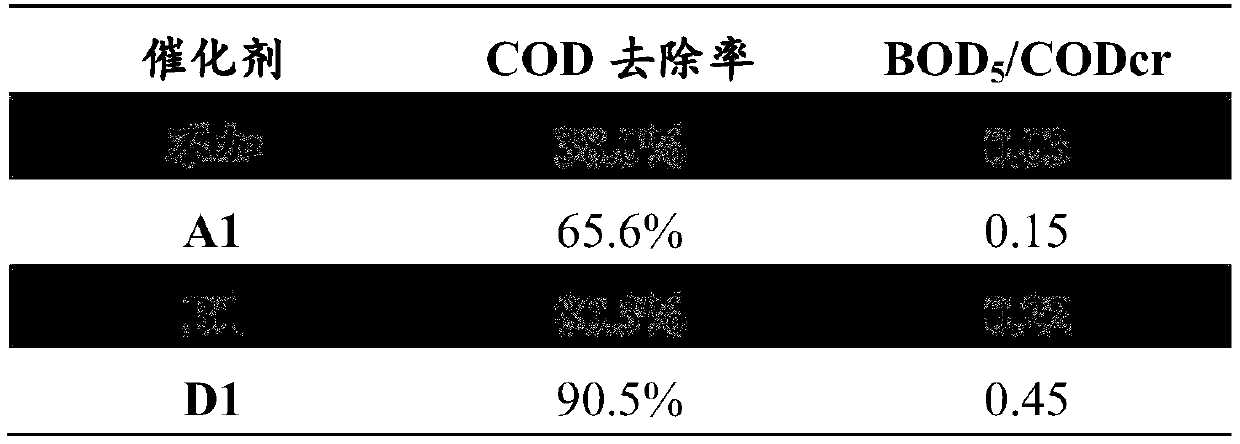Assistant wastewater treatment process
A technology for wastewater treatment and additives, which is used in special compound water treatment, oxidized water/sewage treatment, water/sewage multi-stage treatment, etc. Effect
- Summary
- Abstract
- Description
- Claims
- Application Information
AI Technical Summary
Problems solved by technology
Method used
Image
Examples
Embodiment 1
[0034] Such as figure 1 Shown is the tubular continuous reaction device of the present invention. The device includes a filter 1, a sewage buffer tank 2, a sewage pump 3, a free radical generator 4, an air compressor 5, an air buffer tank 6, and an air flow meter 7. , Heat exchanger 8, high-pressure separation tank 9, liquid storage tank 10, the air compressor 5 is connected to the inlet of the air pressure buffer tank 6, and the air buffer tank 6 communicates with free radicals through a pipeline provided with an air flow meter 7 The generator 4 is connected, the filter 1 is connected with the sewage buffer tank 2 through a pipeline, the sewage buffer tank 2, the sewage pump 3 and the free radical generator 4 are connected in sequence, and the free radical generator 4 inlet is provided with a heat exchanger for 8 The reactor discharge stream and the feed stream exchange heat, the outlet of the free radical generator 4 is connected to a high-pressure separation tank 9 through a...
Embodiment 2
[0037] Preparation of catalyst A:
[0038] 1) Weigh 261g of ruthenium chloride trihydrate dissolved in 10L of deionized water to form solution A;
[0039] 2) Weigh 1Kg of coconut shell activated carbon and place it in a muffle furnace at 100°C for high temperature activation for a period of time, and cool to room temperature to obtain activated carrier B;
[0040] 3) Add 500g of activated carrier B to 2L of solution A and soak for 5 hours, and filter to obtain catalyst precursor C;
[0041] 4) The precursor C was dried at 80° C. for 5 hours, and then calcined at 800° C. for 8 hours to obtain catalyst A. After detection and analysis, the loading amount of ruthenium was 0.21 wt%.
Embodiment 3
[0043] Preparation of catalyst B:
[0044] 1) Weigh 250g of manganese nitrate and dissolve it in 5L of deionized water, then add 150mL of 30% hydrogen peroxide, and react at 30°C for 1 hour to obtain reaction solution A;
[0045] 2) Add 1Kg of ZSM-5 molecular sieve to reaction solution A, soak for 5 hours, filter, and dry to obtain catalyst precursor A;
[0046] 3) Weigh 26g of cobalt chloride and 272g of zinc chloride to dissolve in 5L of deionized water to obtain solution B, and place precursor A in solution B for total immersion for 5 hours to obtain catalytic precursor B;
[0047] 4) Dry the catalyst precursor B at 80°C for 3 hours, then put it in a muffle furnace and calcinate at 600°C for 8 hours to obtain catalyst B. After detection and analysis, the content of the catalyst active component Mn is 1.12wt %, the content of Co is 0.12wt%, and the content of zinc is 2.08wt%.
PUM
 Login to View More
Login to View More Abstract
Description
Claims
Application Information
 Login to View More
Login to View More - Generate Ideas
- Intellectual Property
- Life Sciences
- Materials
- Tech Scout
- Unparalleled Data Quality
- Higher Quality Content
- 60% Fewer Hallucinations
Browse by: Latest US Patents, China's latest patents, Technical Efficacy Thesaurus, Application Domain, Technology Topic, Popular Technical Reports.
© 2025 PatSnap. All rights reserved.Legal|Privacy policy|Modern Slavery Act Transparency Statement|Sitemap|About US| Contact US: help@patsnap.com


